
WARNING: The Economy May Not Survive This
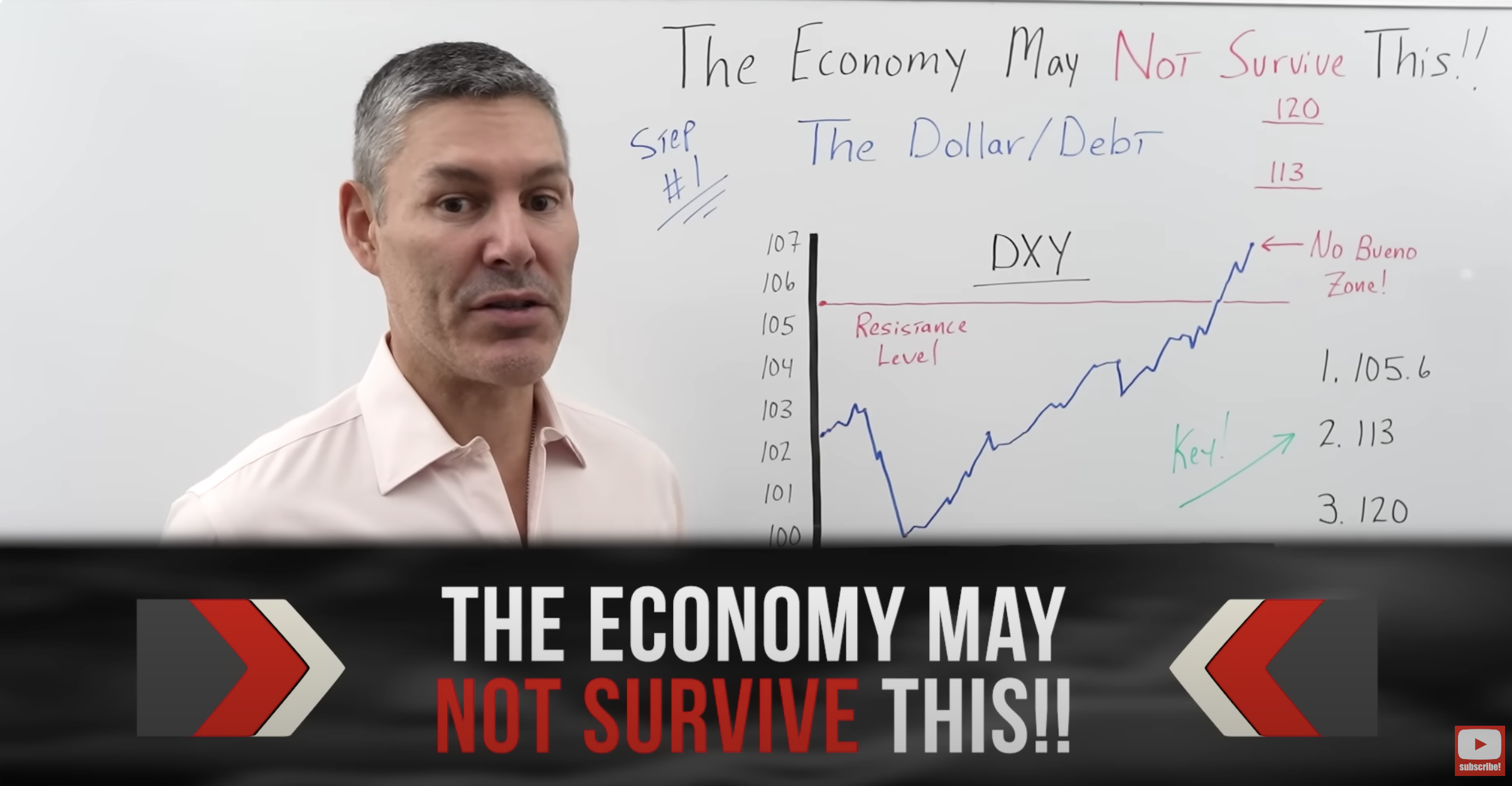
A Financial Apocalypse is Nearing, and You Need to Know Why
The Calm Before the Storm
We’ve all heard of a black swan event—an unpredictable, catastrophic occurrence that shakes the very foundations of the economy. But what if I told you that the next black swan event is not only predictable but also imminent? Buckle up, because we’re diving into a financial abyss that could spell disaster for the global economy, and you need to understand why.
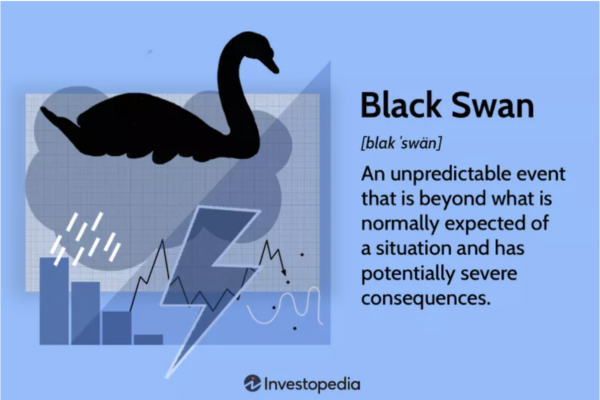
The Dollar’s Dangerous Dance
The Resistance Levels: A Ticking Time Bomb
The U.S. dollar, measured by the DXY index, has been on a rollercoaster ride. Technical analysis reveals resistance levels that the dollar has broken through, and once it pierces these levels, the sky—or in this case, the abyss—is the limit. The DXY recently smashed through a resistance level of 105.6, and it’s not stopping. The next resistance? Around 112-113. If it breaks that, we’re looking at a DXY of 120.
Dollar Index -> Plain And Simple by basictradingtv on TradingView.com
The Debt Quagmire: A No Bueno Zone
Why is this alarming? Because a soaring dollar spells doom for global dollar-denominated debt. Imagine the average “Yo” in China, who has dollar-denominated debt but earns in yuan. As the dollar rises, his debt burden becomes unbearable, leading to defaults. And who holds that defaulting debt? Banks. This creates a ripple effect, affecting the liquidity and stability of global financial systems.
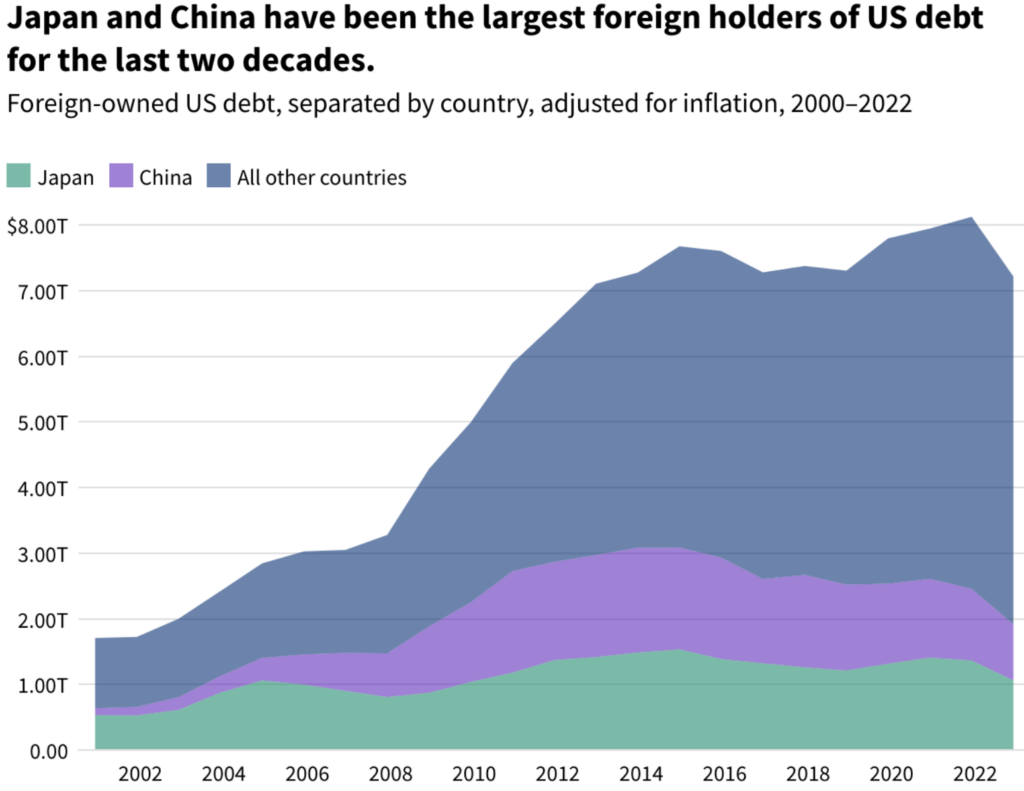
Dollar-Denominated Debt in Latin America
Countries in Latin America have a high proportion of U.S. dollar-denominated debt. At the aggregate level, issued dollar-denominated debt makes up around 17% of total government debt in select Latin American economies. Moreover, for some countries, such as Colombia and Argentina, the share of dollar-denominated debt is even higher: Over 30% of government debt in Colombia and 55% of government debt in Argentina were issued in dollars.
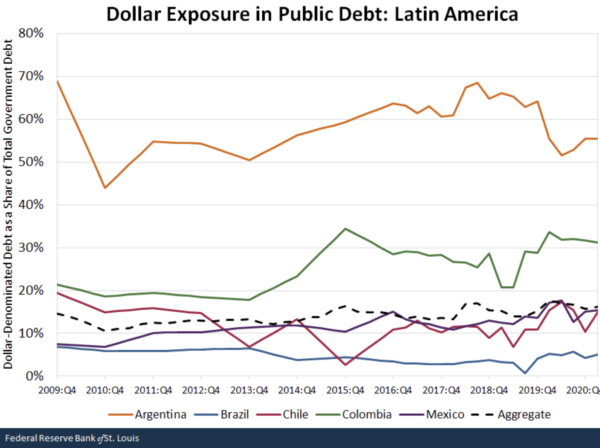
The Commodity Catastrophe
The Oil Omen
The dollar’s value doesn’t just affect debt; it also impacts commodity prices. Oil prices have surged from around $73 to nearly $85 in just three months. For the average “Yo,” this is a double whammy. He’s already struggling with his dollar-denominated debt, and now he has to deal with rising commodity prices. It’s not just oil; other essential commodities like corn, soybeans, and even beef have seen significant price hikes. The global economy is teetering on the brink, and the rising dollar is pushing it over the edge.
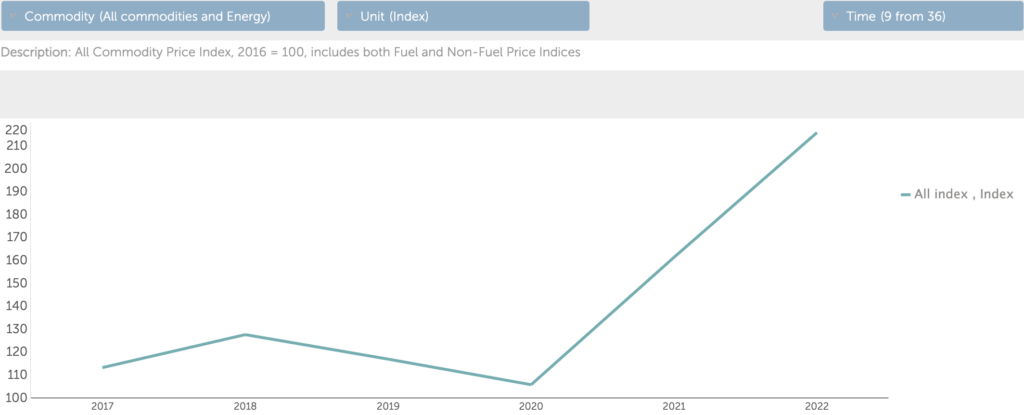
The BRICS Mirage
The Illusion of Escape
Some argue that the BRICS nations (Brazil, Russia, India, China, South Africa) are planning a gold-backed currency that could replace the dollar. But the data shows that the dollar’s use for international payments has actually increased. The BRICS may be gaining traction, but they’re not replacing the dollar anytime soon.
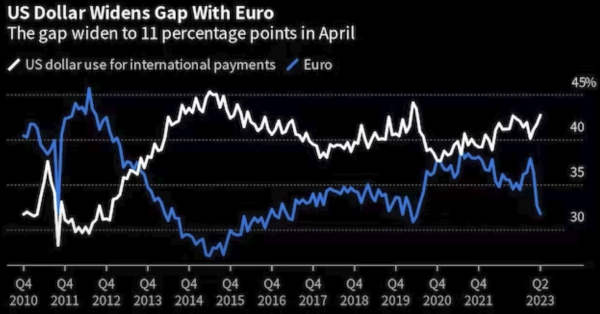
The Central Planners’ Dilemma
Plaza Accord 2.0: A Double-Edged Sword
If the dollar continues its ascent, we might see a new Plaza Accord to artificially depreciate the dollar. While this could provide temporary relief to the global economy, it could unleash hyperinflation in the U.S., crushing the middle and lower classes.
The Domino Effect: Small Business Bankruptcies
The Wall Street Journal reports that small business bankruptcies are on the rise. If the dollar depreciates, input costs for these businesses will skyrocket, leading to a wave of bankruptcies and a potential economic depression. So, what’s your next move? For more insights into the world of economics and finance, stay tuned. The next black swan event is not a matter of if, but when. And when it happens, you’ll want to be prepared.
